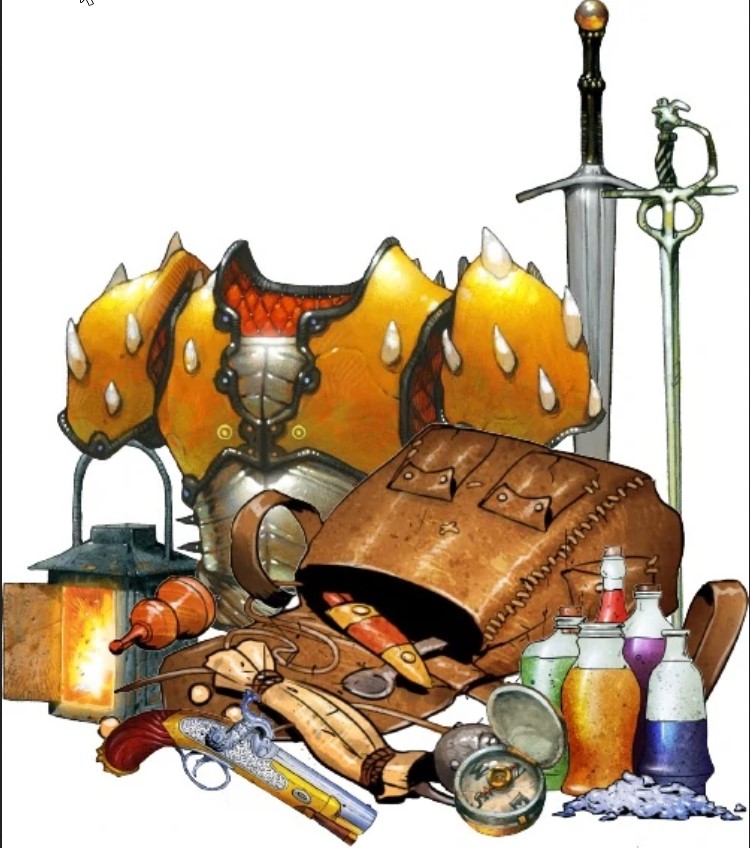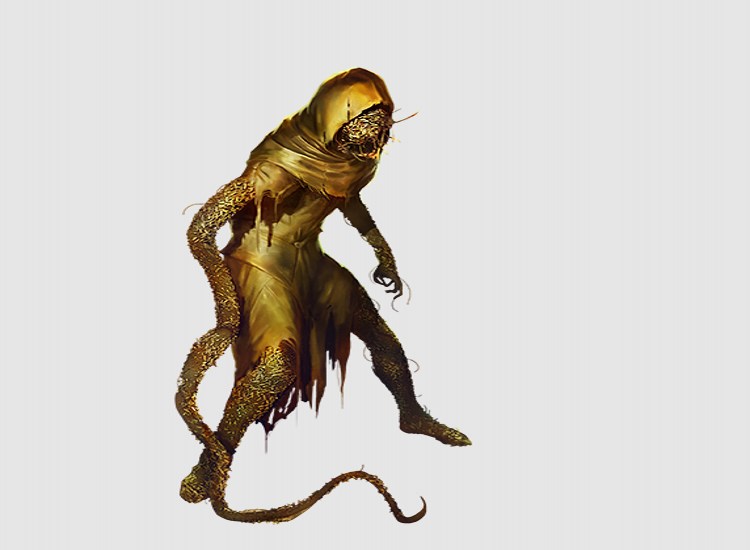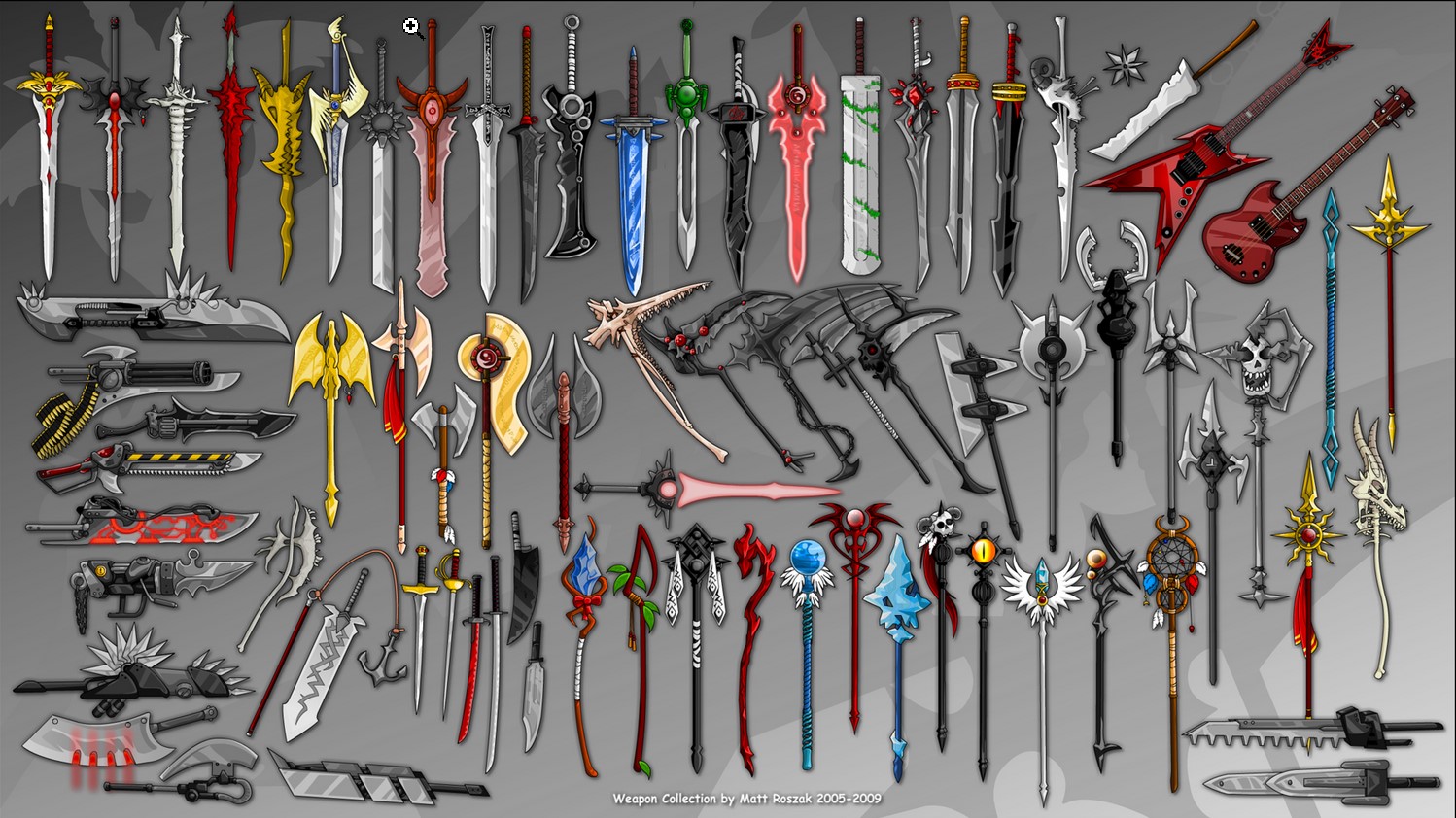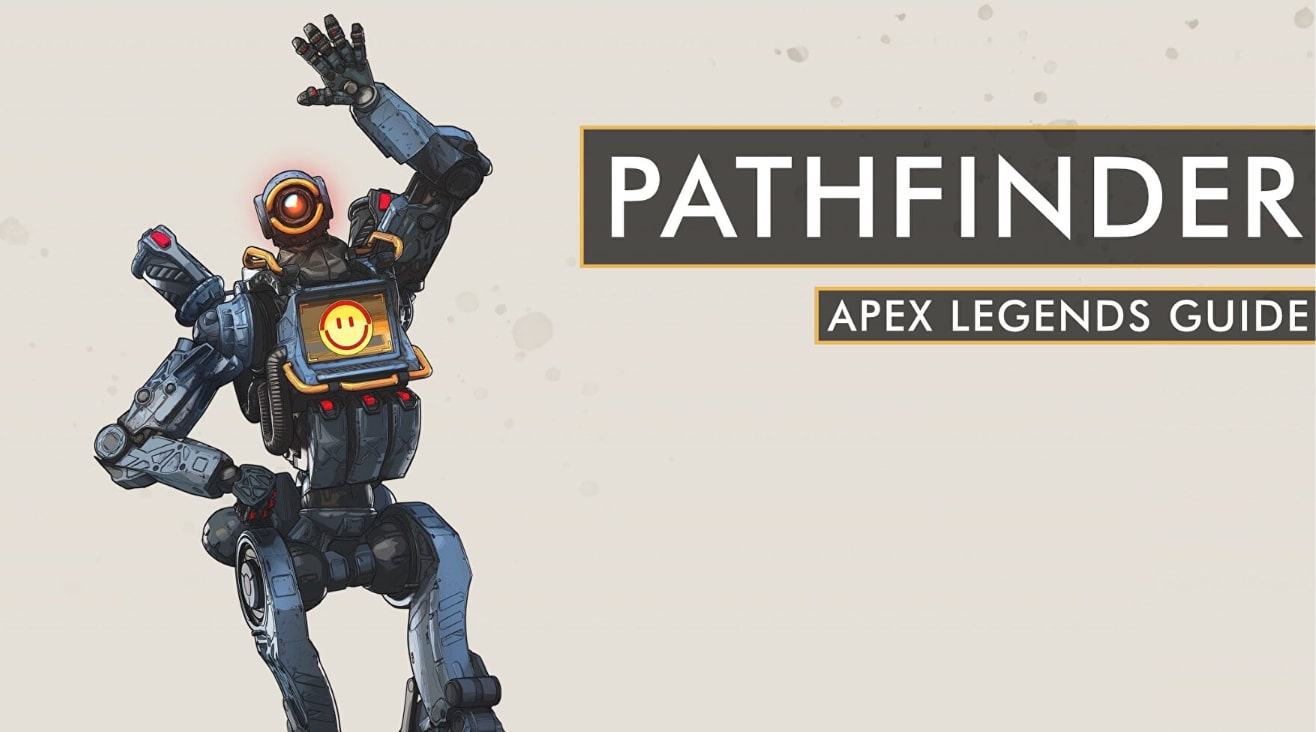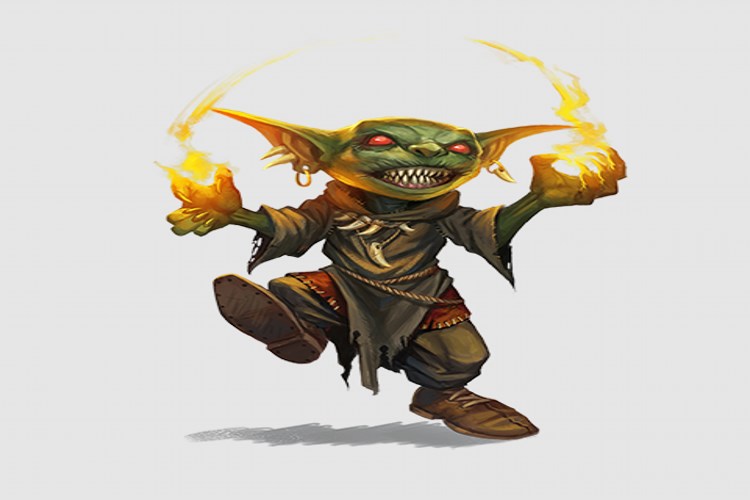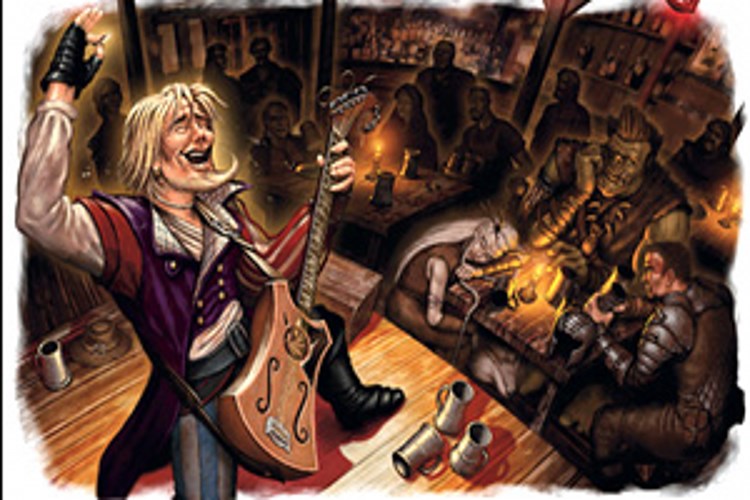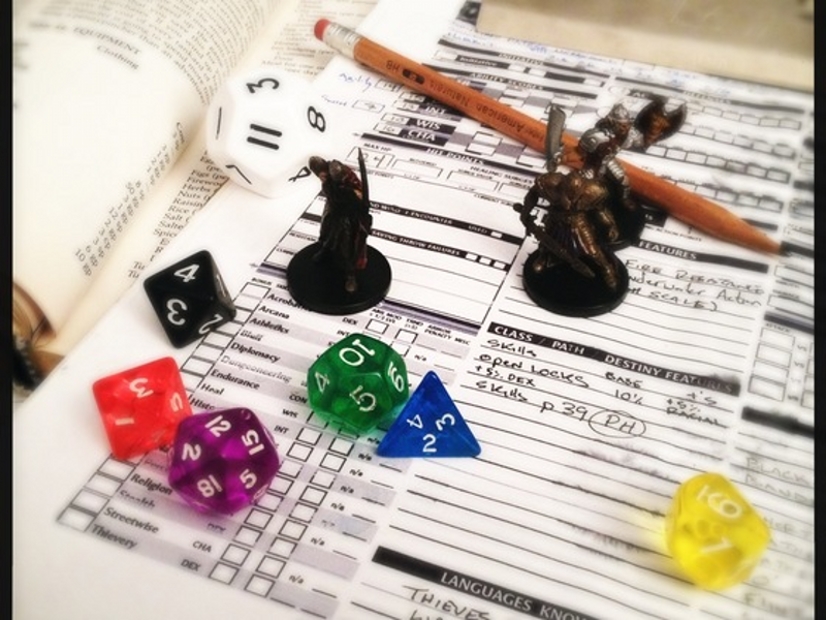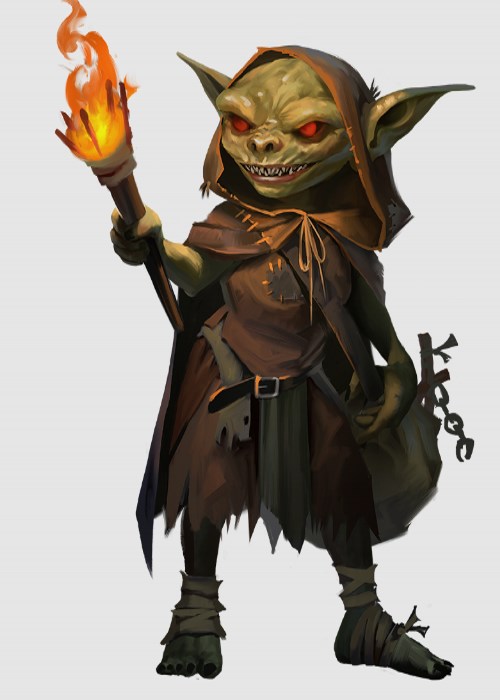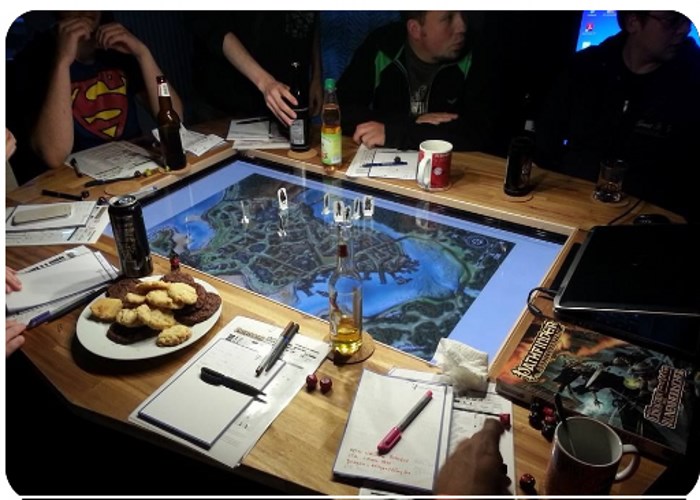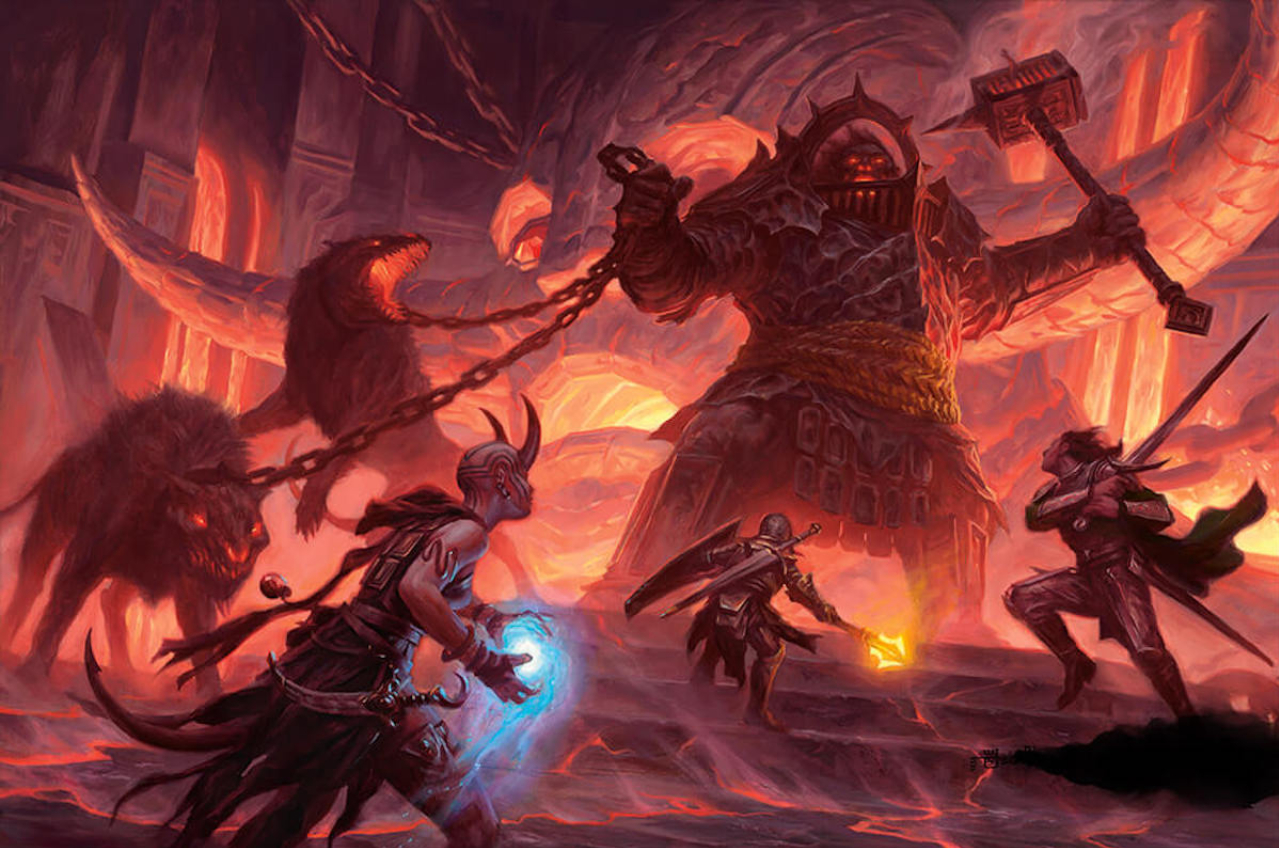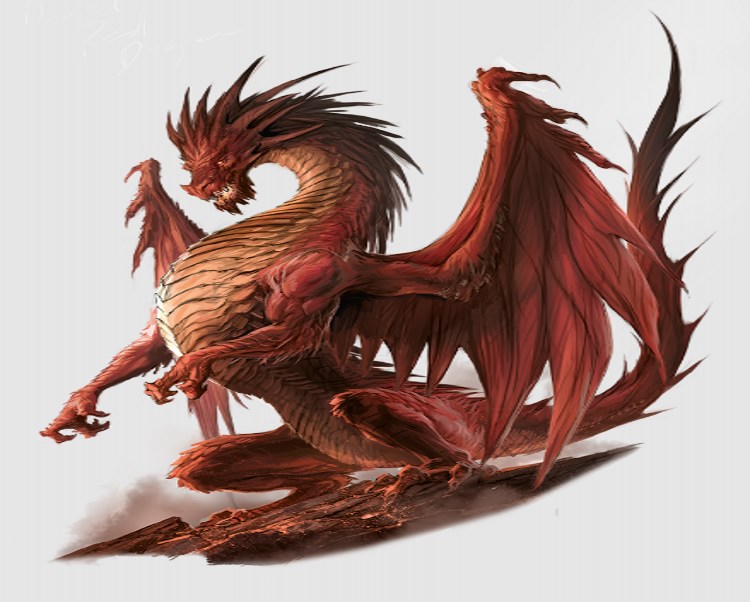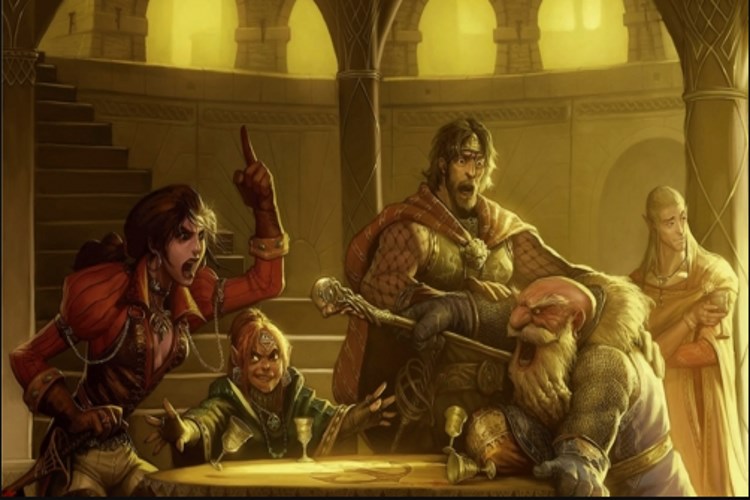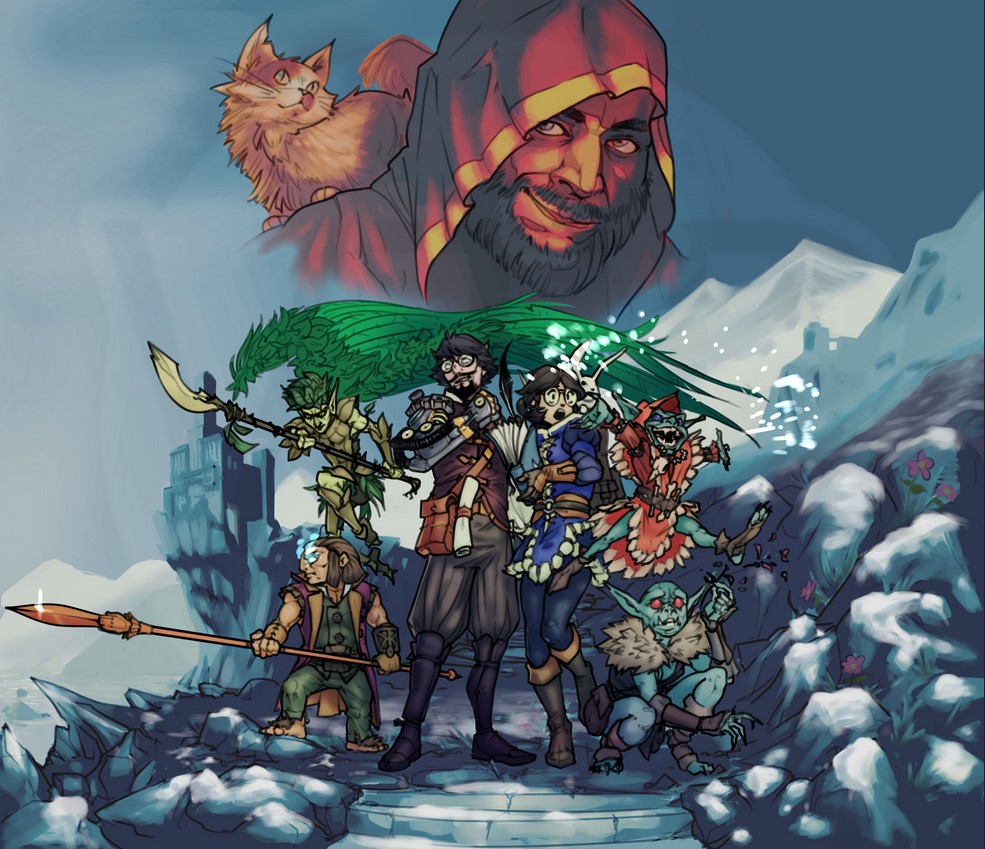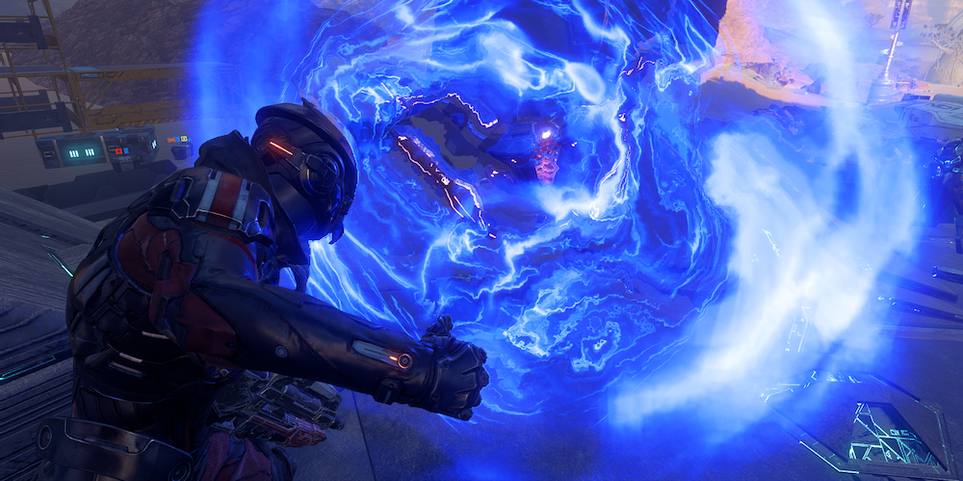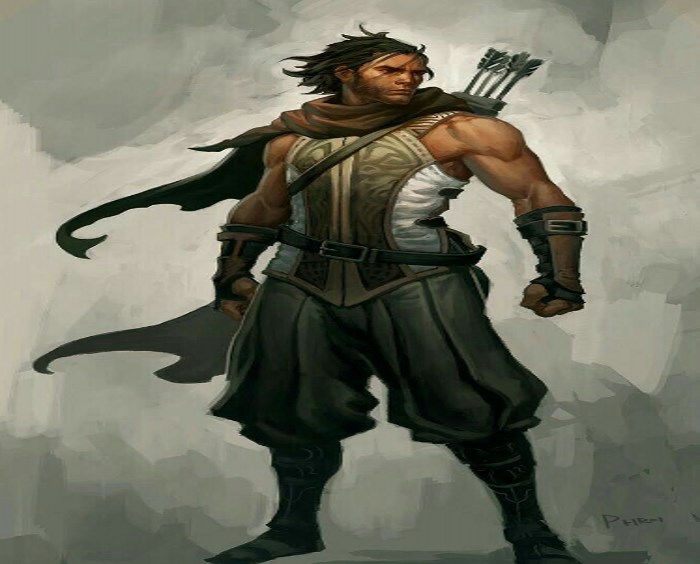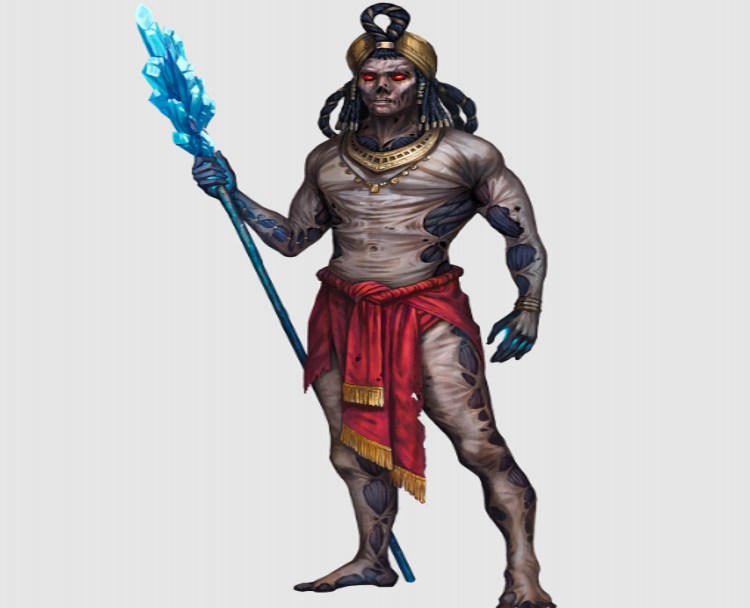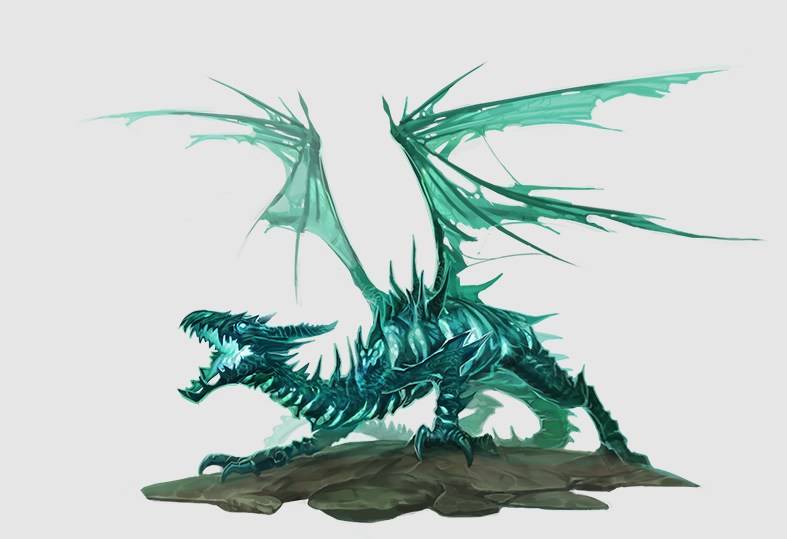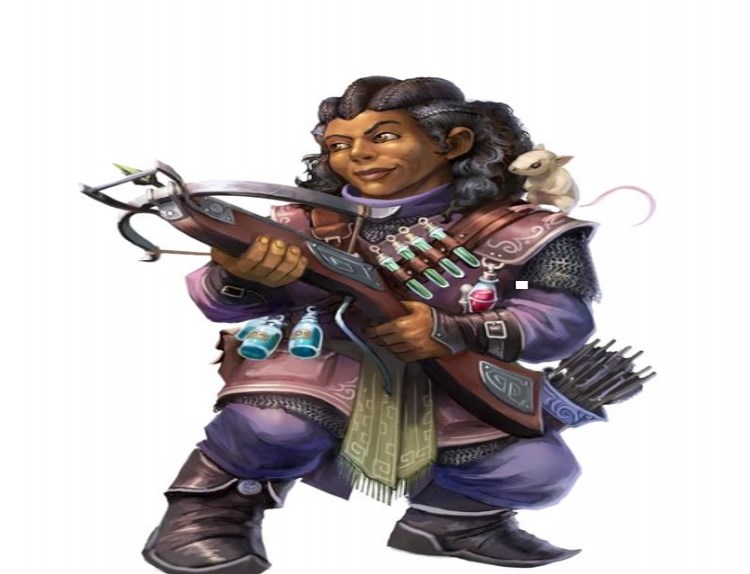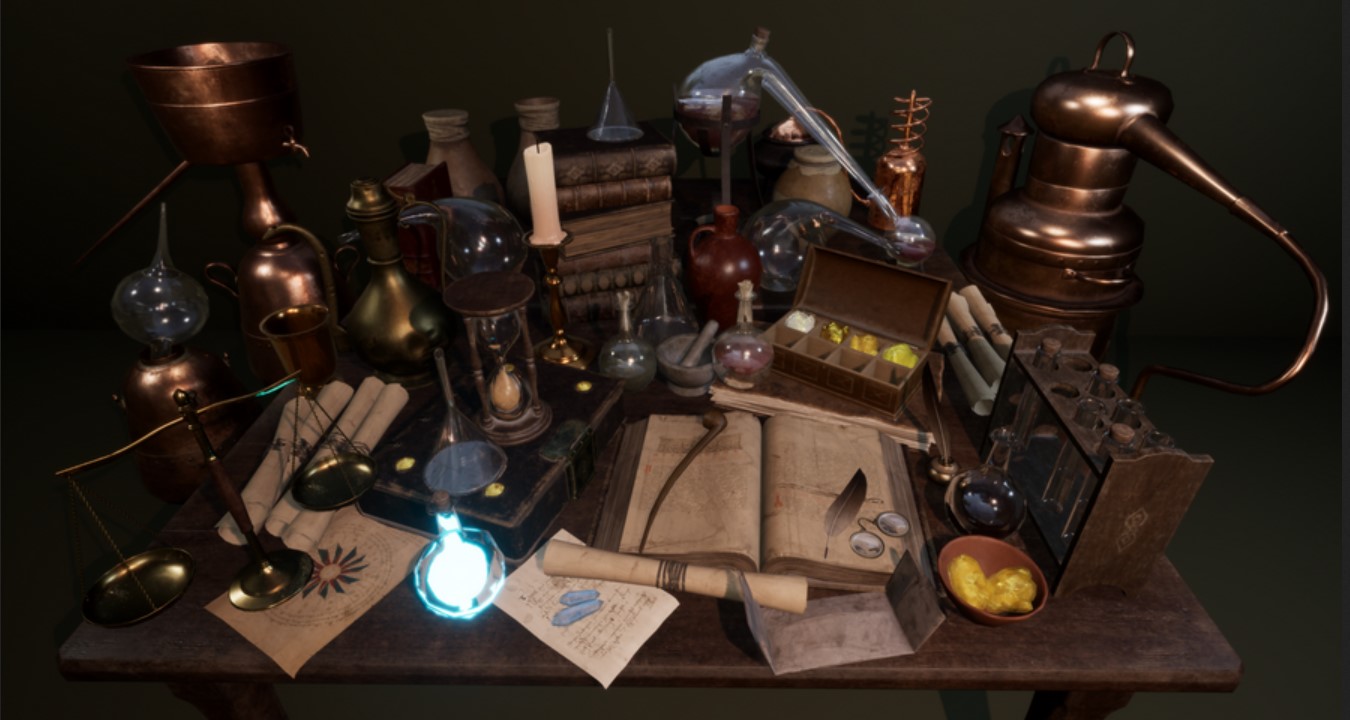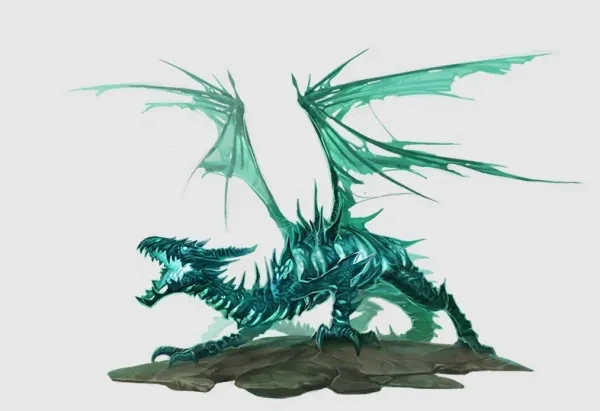
If you’re running a homebrew campaign, figuring out which monster to end it with, one way or the other is the hardest part. But you can’t make the fight to easy. You want to make the monster a challenge that tests everything the players have learned. Even if the dice fail, the players will still have a good story
15. Ravener
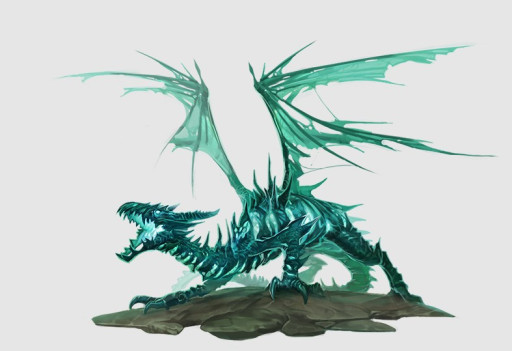
Better known as a dracolich, this undead dragon is more powerful than most living dragons. Like most dragons, every part of this monstrosity is a lethal weapon. Of course, just getting anywhere near the ravener is a major hazard. Mostly because it steals souls.
If you die within thirty feet of a ravener, there’s a reasonable chance, it can steal your soul. You have to pass a DC 44 fortitude check. If you critically fail, it succeeds. Granted at level 20, this sounds simple. But nearly every one of its attacks inflicts the drained condition, which lowers your fortitude save.
The Raveners are a blight upon the land. They hit hard too. Their breath weapon can be devastating, inflicting 20d6 damage. And it can inflict the drained status, which makes passing the save harder. The ravener also has a soul ward. Once it gets below 51 HP, the party has to kill it in one round. Otherwise, it will disappear and the ravener will reform.
Ravener stats:
- Level 21
- Perception +37; darkvision, scent (imprecise) 60 feet, smoke vision, soulsense 60 feet
- Languages Abyssal, Common, Draconic, Dwarven, Jotun, Necril, Orcish
- Skills Acrobatics +32, Arcana +37, Athletics +39, Deception +38, Diplomacy +38, Intimidation +40, Stealth +35
- Str +9, Dex +5, Con +9, Int +5, Wis +6, Cha +8
- Smoke Vision Smoke doesn't impair an ancient red ravener's vision; it ignores the concealed condition from smoke.
- AC 47; Fort +38, Ref +34, Will +37; +1 status to all saves vs. magic
- HP 500; Immunities death effects, disease, fire, paralyzed, poison, sleep; Weaknesses cold 20, good 20
- Cowering Fear (aura, emotion, fear, mental) 90 feet, DC 42.Dragon Heat (arcane, aura, evocation, fire) 10 feet, 4d6 fire damage (DC 41 basic Reflex save)
- Soul Ward 200 HP. An intangible field of necromantic energy protects a ravener from total destruction. A soul ward has 150 maximum Hit Points, or 200 if the ravener is level 21 or higher. Whenever a ravener would be reduced below 1 Hit Point, all damage in excess of what would reduce them to 1 Hit Point is instead dealt to their soul ward. If this damage reduces the soul ward to fewer than 0 Hit Points, the ravener is destroyed. A soul ward’s Hit Points can be restored only via specific ravener abilities such as Consume Soul, ravenous breath, or vicious criticals. A ravener who goes more than a week without successfully using Consume Soul to feed on a dying creature starves, and their soul ward loses 1d4 Hit Points each day until they feed. If the ravener’s soul ward loses all its Hit Points while the ravener still has more than 1 HP, they become a ravener husk.
- Attack of Opportunity Jaws only
- .Discorporate (divine, necromancy) Trigger The ravener takes excess damage to their soul ward but still has at least 51 Hit Points in their soul ward; Effect The ravener draws deeply into their soul ward, discorporating their body into soul energy in order to escape. They take 50 damage to their soul ward and their physical body vanishes, reappearing 1d4 hours later in a random location within 1 mile from the location where they used Discorporate.
- Redirect Fire (abjuration, arcane) Trigger A creature within 100 feet casts a fire spell, or a fire spell otherwise comes into effect from a source within 100 feet; Effect The ravener makes all the choices to determine the targets, destination, and other effects of the spell, as though they were the caster.
- Speed 60 feet, fly 180 feet
- Melee jaws +39 [+34/+29] (fire, magical, reach 20 feet), Damage 4d10+17 piercing plus 3d6 fire and 2d6 negativeMelee claw +39 [+35/+31] (agile, magical, reach 15 feet), Damage 4d8+17 slashing plus 2d6 negativeMelee tail +37 [+32/+27] (magical, reach 25 feet), Damage 4d10+15 slashing plus 2d6 negativeMelee wing +37 [+33/+29] (agile, magical, reach 20 feet), Damage 3d8+15 slashing plus 2d6 negativeArcane Innate
- Spells DC 44; 8th wall of fire (at will); 4th suggestion (at will); Cantrips (9th) detect magic, read aura
- Consume Soul (death, divine, necromancy) Trigger A living creature within 30 feet of the ravener dies; Effect The ravener tears the creature’s soul from its body with their maw and gulps it down. The dying creature must attempt a DC 44 Fortitude save.
- Critical Success The creature is unaffected.
- Success The ravener tears off a small chunk of the creature’s soul. If the victim is restored to life, they are drained 1 in addition to any other side effects of returning to life. The ravener adds a number of Hit Points to their soul ward equal to half the creature’s level.
- Failure As success, but the creature’s soul is ravaged. The creature is drained 3 and the ravener adds a number of Hit Points to their soul ward equal to the creature’s level.
- Critical Failure As failure, but the ravener devours the entire soul. The victim can’t be restored to life as long as the ravener exists except via a 10th-level effect such as miracle or wish, and the ravener adds a number of Hit Points to their soul ward equal to twice the creature’s level.
- Manipulate Flames (arcane, concentrate, transmutation) The ravener attempts to take control of a magical fire or a fire spell within 100 feet. If it succeeds at a counteract check (counteract level 10, counteract modifier +34), the original caster loses control of the spell or magical fire, control is transferred to the ravener, and this action counts as the ravener having Sustained the Spell with the action (if applicable). The ravener can choose to end the spell instead of taking control, if they choose.
- Ravenous Breath Weapon (arcane, evocation, fire) The ravener breathes a blast of flame that deals 20d6 fire damage plus 4d6 persistent negative damage (DC 44 basic Reflex save). A creature that fails its save is also drained 1 (or drained 2 on a critical failure). If a creature is drained by the ravener's Ravenous Breath Weapon, the ravener's soul ward gains 5 HP. The ravener can't use Breath Weapon again for 1d4 rounds.
- Vicious Criticals The ravener treats an attack roll as a critical hit on a roll of 19 or 20, as long as the attack roll was a success. Additionally, whenever the ravener makes a critical hit with one of their Strikes, the target must succeed on a Fortitude save or gain the drained 1 condition. If the target already has a drained value of greater than 0, their drained value instead increases by 1, to a maximum of drained 4. Whenever the ravener applies drain to a creature in this way, their soul ward gains 5 Hit Points.
14. Thulgant
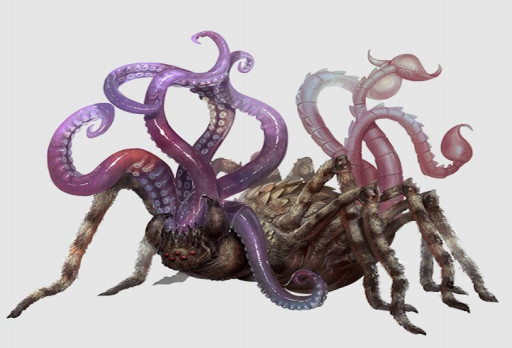
Long before demons took over the Abyss, it was ruled by the qlippoths. While the demons won, the qlippoths exist and they’re not happy about their defeat. And recognizing that demons come from mortals, they’ve decided to kill mortals. Thulgants are one of the most powerful. And barring some really bizarre story circumstances, the party is a target.
Thulgants have decent physical power. Their stingers are damaging and venomous. The venom can, depending on the GM’s dice roll inflict clumsiness, stupefication, or enfeeblement. None of these are good when you’re fighting a high-level monster.
The bigger threat is the magic. Particularly flesh to stone. If a character becomes completely petrified, they’re out of the fight. Particularly mean GMs may try to target a petrified character and shatter them. Which would render them unable to be resurrected by normal means.
Thulgant stats:
- Level 18
- Perception +30; greater darkvision, true seeing
- Languages Abyssal; telepathy 100 feet
- Skills Acrobatics +32, Athletics +35, Occultism +33, Stealth +32
- Str +9, Dex +6, Con +6, Int +5, Wis +6, Cha +9
- AC 42; Fort +30, Ref +28, Will +32
- HP 305 ( fast healing 10); Immunities controlled, fear; Resistances mental 15, physical 15 (except cold iron); Weaknesses lawful 15
- Speed 30 feet, climb 30 feet, fly 50 feet; freedom of movement
- Melee stinger +35 [+30/+25] (reach 10 feet), Damage 3d12+17 piercing plus 3d6 mental, 1d6 chaotic, and thulgant venom
- Melee tentacle +35 [+31/+27] (agile, reach 10 feet), Damage 3d8+17 bludgeoning plus 2d6 acid, 1d6 chaotic, and Grab
- Occult Innate Spells DC 40; 9th flesh to stone (×3), phantasmal calamity; 8th dispel magic, divine aura (chaotic only), divine decree (chaotic only), phantom pain (×3); 7th plane shift; Cantrips (9th) daze, detect magic; Constant (6th) true seeing; (4th) freedom of movement
- Rituals DC 40; 9th imprisonment
- Demon Hunter (divination, occult) The thulgant causes a demon within 30 feet to suffer the effect of its sinful vulnerability.
- Greater Constrict 2d6+17 bludgeoning and 1d6 acid, DC 40
- Mind-Rending Sting Requirement The thulgant hits the same enemy with two consecutive sting Strikes in the same round; Effect The thulgant deals 3d12+17 mental damage to the enemy. If the enemy is affected by thulgant venom, that poison gains the virulent trait.
- Stunning Display (concentrate, emotion, enchantment, fear, incapacitation, mental, occult, visual) The thulgant rises up on its twitching limbs and presents its numerous tentacles and stingers in a horrifying display of awfulness. Creatures in a 30-foot emanation must attempt a DC 40 Will save, after which they are temporarily immune to further Stunning Displays for 1 minute.
- Critical Success The creature is unaffected.
- Success The creature is stunned 1.
- Failure The creature is stunned 4.
- Critical Failure The creature is stunned 8.
- Thulgant Venom (poison) Saving Throw Fortitude DC 40; Maximum Duration 6 rounds; Stage 1 3d6 poison damage and the victim gains one of the following at random: clumsy 1, enfeebled 1, or stupefied 1 (1 round); Stage 2 6d6 poison damage and the victim gains two of the following at random: clumsy 2, enfeebled 2, or stupefied 2 (1 round); Stage 3 9d6 poison damage and the victim gains all three of the following: clumsy 3, enfeebled 3, and stupefied 3 (1 round)
13. Angazhani
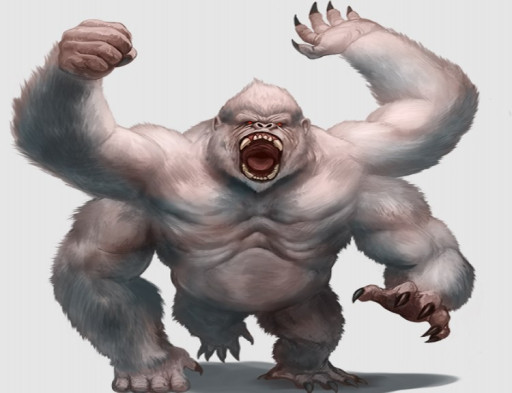
For those looking to end a jungle adventure at level 10, a good boss is the Angazhani. These creatures used to rule the Mwangi jungles under the rule of a ruthless king. But the king was killed and these multi-armed and dangerous apes are at war with each other and anyone else in their territory.
These apes have one major power. They hit hard. And they hit a lot. Their ability, Focused Slam is guaranteed at least one hit. They can also use the devastating rend ability if they use Focused Slam or they hit with multiple regular attacks.
The Angazhani also have enchantment magic. They can use the high-level Dominate spell to take a party member out of the fight. Aside from this, the Angazhani is a relatively vanilla boss monster. However, it is possible to modify him. Consider giving him class levels or a template.
Angazhani stats:
- Level 10
- Perception +18; darkvision
- Languages Abyssal, Common, Mwangi
- Skills Athletics +20, Intimidation +15, Religion +16, Survival +16
- Str +6, Dex +4, Con +5, Int -1, Wis +4, Cha +3
- AC 26; Fort +19, Ref +16, Will +14
- HP 180
- Defensive Disarm Trigger A creature makes a melee weapon Strike against the angazhani and misses; Requirements The angazhani is benefiting from their Defensive Slam; Effect The angazhani attempts to Disarm the attacker of the triggering weapon.
- Speed 25 feet, climb 25 feet
- Melee fist +20 [+15/+10] (reach 10 feet), Damage 2d8+9 bludgeoning
- Melee jaws +20 [+15/+10], Damage 2d12+9 piercing
- Divine Innate Spells DC 24; 6th dominate; 3rd fear (×2)
- Defensive Slam The angazhani uses their arms to defend themself while attacking. The angazhani Strikes once and gains a +2 circumstance bonus to AC until the start of their next turn.
- Focused Slam The angazhani beats a single opponent with all four of their brawny arms, leaving their foe nowhere to dodge. The angazhani makes a fist Strike. On a successful attack, they deal fist damage to the target plus an additional 3d8 damage, and they meet the requirements to Rend the target this turn, even if they didn't hit on two consecutive Strikes. Even on a failed attack, the angazhani deals the damage from one fist Strike to the target, though they still miss completely on a critical failure. This ability counts as four attacks toward an angazhani's multiple attack penalty. After using this ability, the angazhani is flat-footed until the beginning of their next turn.
- Pummeling Charge Effect The angazhani rushes up to a foe at extreme speed and slams down with their fists. The angazhani Strides or Climbs up to three times, then makes two fist Strikes against one enemy within reach.
- Rend fist
12. Will-o-’Wisp
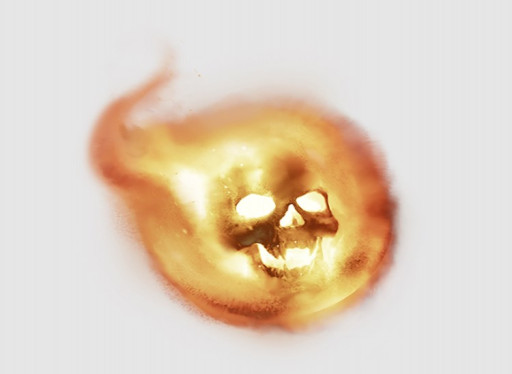
The Will-o-’Wisp is a vicious aberration that feeds on fear and terror. They dwell in the swamps. While they are small, they pose a significant threat in numbers. They are perfect for a boss of a one-shot or a lead-in to the next part of a home brew.
Will-o’-Wisps are a bit more defense-oriented than other bosses. They are immune to most magic. They also can go invisible at will. Often they will attack, then go invisible.
Midgame is often when monsters start gaining serious special abilities. The ability to go invisible at will is extremely overpowered. As a final boss, it is appropriate, though I suggest setting something up like happening to give new players a fighting chance. Have the players find some method of seeing invisibility. For a mid-boss this will help your players know that encounters won’t be simple slugfests anymore and that they’ll need to use more strategy when building characters.
Will-o’-Wisp stats
- Level 6
- Perception +16; darkvision
- Languages Aklo, Common
- Skills Acrobatics +18, Deception +12, Intimidation +12, Stealth +16
- Str -5, Dex +6, Con +0, Int +2, Wis +4, Cha +2
- AC 27; Fort +10, Ref +16, Will +14
- HP 50; Immunities magic
- Glow (aura, light) 20 feet. A will-o’-wisp is itself naturally invisible, but glows with a colored light, casting bright light in the aura and making it visible.
- Magic Immunity A will-o’-wisp is immune to all spells except faerie fire, glitterdust, magic missile, and maze.
- Speed fly 50 feet
- Melee shock +17 [+12/+7] (electricity, magical), Damage 2d8+4 electricity
- Feed on Fear (concentrate) Requirement An enemy is under a fear effect or dying within 15 feet of the will-o’-wisp. Effect The will-o’wisp feeds on the creature’s terror. It regains 2d4 Hit Points, and if it has Gone Dark, its glow reignites. A will-o’-wisp can take this action only once per round.
- Go Dark (concentrate) The will-o’-wisp extinguishes its glow, becoming invisible. It can end this effect with another use of this action. If it uses its shock attack while invisible, the arc of electricity lets any observer determine its location, making the will-o’-wisp only hidden to all observers until it moves.
11. Lophiithu
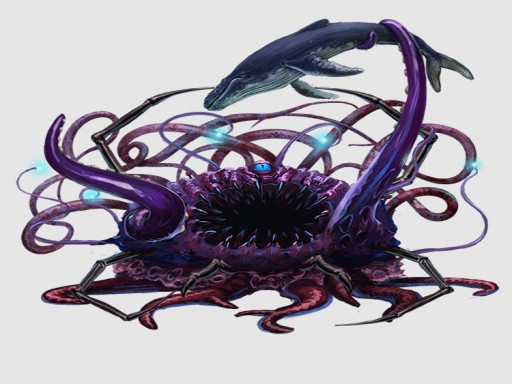
Algolthu are some of the weirdest monsters in the Pathfinder universe. They’re also some of the most dangerous bosses. The lophiithu are among the most powerful and weirdest. And if you’re running a deep sea adventure, they can be a great final boss.
The Lophiithu like to eat. Preferably, they like to eat mortals that happen to wander in their deep sea domain. Their digestive system has a quirk: It’s in another dimension. If the thing swallows you whole, you will in fact be transferred to a different plane.
And the Lophiithu has many ways to make swallowing people whole easier. Their lure tendrils can induce fascination. They also have multiple enchantment spells like telepathic demand to get people to let the Lophiithu eat them. And phantasmal killer is always a threat. Can’t avoid being swallowed whole if you’re dead.
Lophiithu stats:
- Level 21
- Perception +38; darkvision
- Languages Aklo, Alghollthu, Aquan, Undercommon; telepathy 100 feet, tongues
- Skills Athletics +36, Deception +40, Occultism +43, Stealth +40, Survival +36
- Str +6, Dex +10, Con +7, Int +10, Wis +6, Cha +7
- Perception +38; darkvision
- Languages Aklo, Alghollthu, Aquan, Undercommon; telepathy 100 feet, tongues
- Skills Athletics +36, Deception +40, Occultism +43, Stealth +40, Survival +36
- Str +6, Dex +10, Con +7, Int +10, Wis +6, Cha +7
- AC 43; Fort +30, Ref +36, Will +38
- HP 400; Resistances mental 20, precision 15
- Speed 10 feet, swim 80 feet
- Melee jaws +39 [+35/+31] (agile, deadly 3d10, finesse, reach 15 feet), Damage 4d12+18 piercing plus Improved Grab
- Melee lure +37 [+33/+29] (agile, finesse, magical, reach 40 feet), Damage 4d6+18 bludgeoning plus 2d6 mental and beguiling lure
- Occult Innate Spells DC 41; 10th fabricated truth, gate (at will); 9th telepathic demand (×2), unfathomable song (×2); 8th illusory creature (×2), phantasmal killer (×2); Cantrips (9th) dancing lights, daze; Constant (9th) tongues
- Beguiling Lure (illusion, mental, occult, visual) A creature hit by a lophiithu's lure must succeed at a DC 41 Will save or be fascinated with the lophiithu's lures for 1 minute. On a critical failure, it can't use reactions while it remains fascinated. A creature that succeeds at its save is temporarily immune for 1 hour.
- Dimensional Swallow The lophiithu's digestive organs exist in the Maelstrom, regardless of the location of their external form. The lophiithu can swallow any number of creatures of any size. Creatures that Escape the lophiithu's stomach do so normally. Creatures that cut themselves free instead find themselves in the Maelstrom near nothing but one of the lophiithu's disembodied stomachs. When the lophiithu dies, their stomach becomes a rift connecting to their mouth, allowing a creature to return to their plane. This rift disappears after 1 minute.
- Lure Whip The lophiithu makes a lure Strike against each creature within reach. These attacks count toward the lophiithu's multiple attack penalty, but the penalty doesn't increase until after these attacks.
- Swallow Whole Gargantuan, 3d12+10 bludgeoning, Rupture 44 and dimensional swallow
10. Balor
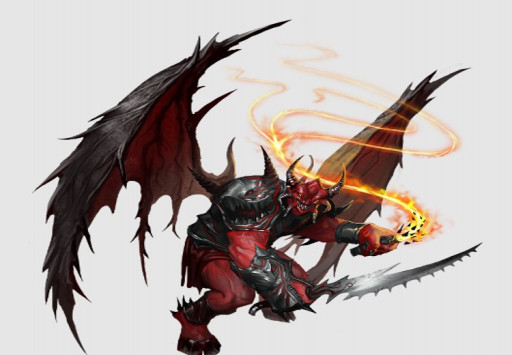
Going back to more conventional bosses, there’s the balor. This demon is the most powerful. While he doesn’t have special quirks, he comes equipped with powerful spells and weaponry.
The balor can use his demonic power to make his weapons more accurate and powerful. Said weapons can also dispel any buffs their target has on themselves. This can become an issue if your party uses buffs a lot. The Balor also has a flame aura that hurts anything that gets near it.
Of course, getting in range of the balor is the first half of the battle. The balor has telekinetic projectile. Anyone who has played a high-level kineticist knows how destructive that ability is. And it can use dominate at will. The balor is dangerous no matter the range and a great final challenge.
Balor stats:
- Level 20
- Perception +36; darkvision, true seeing
- Languages Abyssal, Celestial, Draconic; telepathy 100 feet
- Skills Acrobatics +35, Athletics +37, Deception +36, Diplomacy +32, Intimidation +38, Religion +32, Society +32, Stealth +33
- Str +9, Dex +7, Con +9, Int +6, Wis +6, Cha +8
- Items longsword
- AC 45; Fort +39, Ref +35, Will +34; +1 status to all saves vs. magic
- HP 480; Immunities fire ; Weaknesses cold 20, cold iron 20, good 20
- Aura of Flame (aura, divine, evocation, fire) 20 feet. A foe that starts its turn in the aura takes 3d6+10 fire damage, or 6d6+20 fire damage if the balor has grabbed or restrained it. A creature that hits a balor with an unarmed Strike takes 3d6+10 fire damage, and weapons that hit a balor take 3d6+10 fire damage.
- Attack of Opportunity The balor can use Attack of Opportunity when a creature within their reach uses a concentrate action, in addition to its normal trigger. They can disrupt triggering concentrate actions, and they disrupt actions on any hit, not just a critical hit.
- Death Throes (death, divine, evocation, fire) When a balor dies, their body explodes in a 100-foot aura of intense demonic flame. All creatures and objects in range take 16d10 fire damage (DC 45 basic Reflex save). Because the flame is infused with Abyssal energy, creatures in the area apply only half their usual fire resistance. Creatures with immunity to fire use an outcome one degree of success better than what they rolled, instead of gaining the usual benefit of immunity. The bodies of creatures reduced to 0 Hit Points by a balor’s death throes are completely incinerated into fine ash.
- Speed 35 feet, fly 70 feet
- Melee vorpal cold iron silver longsword +40 [+35/+30] (evil, magical, reach 10 feet, versatile P), Damage 4d8+17 slashing plus 1d6 evil
- Melee cold iron silver flame whip +40 [+35/+30] (disarm, evil, fire, magical, reach 20 feet, trip), Damage 4d6+17 fire plus 1d6 evil, Improved Grab, and whip reposition
- Divine Innate Spells DC 44; 10th dimension door, divine decree (x2); 8th dispel magic (at will); 6th dominate (at will); 5th dimension door (at will); Cantrips (10th) telekinetic projectile; Constant (6th) true seeing
- Divine Rituals DC 44; 1st abyssal pact
- Dimensional Dervish A balor can cast their 5th-level innate dimension door with only a single action.
- Dispelling Strike Frequency once per round. Trigger The balor hits a creature, object, or spell effect with a weapon Strike. Effect The balor casts an innate dispel magic on the target of the triggering Strike.
- Infuse Weapons (divine, evocation) Any weapon a balor wields becomes a +3 major striking vorpal weapon made of cold iron and silver while the demon holds it. A weapon that isn’t eligible for the vorpal rune doesn’t gain its effects. The balor can change its evil damage to chaotic whenever it attacks. The demon can conjure a whip made of flames with an Interact action. This whip gains the same benefits as other weapons the balor wields.
- Lifedrinker (divine, healing, necromancy) Trigger The balor kills a living creature that is at least 15th level. Effect The balor drinks the triggering creature’s life force and regains 10d8+80 Hit Points.
- Whip Reposition When a balor grabs a creature with a whip Strike, they can move the creature to any space in the whip’s reach. The balor can move without ending the grab as long as the creature remains within the whip’s reach, and the balor can move the creature to any other space in the whip’s reach with an Interact action.
9. Veiled Master
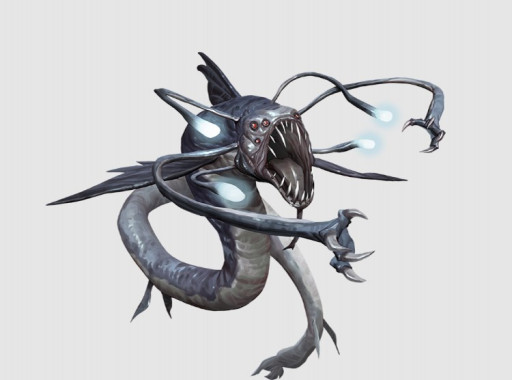
The veiled masters used to control much of the Pathfinder world through manipulation. When people started getting wise to that, the veiled masters dropped a meteor on the world. Like you do. Since then, they retreated to the deep sea to plan their takeover.
Veiled masters are master manipulators. They have spells like dominate to control opponents. They can then implement the more powerful suggestion spell. Moreover, they’re masters of illusion. The illusionary scene spell lets the veiled master make you see what they want you to see.
Their physical attacks are no joke either. Their slime drains a player’s HP. And it can take away a player’s ability to breathe air The veiled masters destroyed the world once. Some dungeon crawlers are nothing to them.
Veiled Master stats:
- Level 14
- Perception +25; darkvision
- Languages Aklo, Alghollthu, Aquan, Common, Undercommon; tongues
- Skills Arcana +27, Athletics +24, Deception +28, Intimidation +26, Lore +29 (any one subcategory), Occultism +29, Society +27, Stealth +24
- Str +6, Dex +6, Con +8, Int +7, Wis +5, Cha +6
- Mucus Cloud (aura, disease) 30 feet. While underwater, a veiled master exudes a cloud of transparent slime. An air-breathing creature within 30 feet of a veiled master must succeed at a DC 36 Fortitude save each round or lose the ability to breathe air but gain the ability to breathe water for 24 hours.
- AC 34; Fort +26, Ref +22, Will +24; +2 status to all saves vs. magic
- HP 270; Immunities controlled, electricity, mental ; Resistances cold 20
- Speed 10 feet, swim 80 feet
- Melee claw +30 [+26/+22] (agile, magical, reach 20 feet), Damage 3d10+12 slashing plus slime
- Melee fangs +28 [+24/+20] (agile, magical, reach 10 feet, versatile S), Damage 3d8+12 piercing plus slime and consume memories
- Melee tentacle +28 [+24/+20] (agile, electricity, magical, reach 20 feet), Damage 7d6 electricity plus thoughtlance
- Occult Innate Spells DC 37; 9th project image (at will); 8th illusory scene (at will), suggestion (x3); 7th veil (at will); 6th dominate (x3); 5th dimension door (x3), hallucinatory terrain (at will), illusory object (at will); 3rd hypnotic pattern (at will), levitate (at will), mind reading (at will), secret page (at will); Constant (5th) tongues
- Occult Rituals DC 37; 5th geas
- Change Shape (concentrate, occult, polymorph, transmutation) Once per round, a veiled master can take on the appearance of a humanoid of Large, Medium, or Small size or resume its true form. While in humanoid form, the veiled master’s Speed is 30 feet, and it loses its mucus cloud aura and swim Speed. If the humanoid form assumed lacks the aquatic trait, the veiled master loses its own aquatic trait as well. In humanoid form, the veiled master can use weapons, or it can make Strikes that work like its tentacle attack but use the reach of its current form. If the assumed form has fangs or claws, the veiled master can also make such Strikes, but these attacks lack the veiled master’s slime.
- Consume Memories (mental, occult) When a veiled master makes a fangs Strike against a creature, it can consume some of that creature’s memories. The target must succeed at a DC 37 Fortitude saving throw or become stupefied 1. A veiled master regains 5 Hit Points each time it successfully consumes memories. When a veiled master consumes memories, it learns some of the creature’s memories (subject to the GM’s discretion).
- Delayed Suggestion (enchantment, occult) When a veiled master successfully casts dominate on a creature, a suggestion spell triggers when the dominate spell ends. This suggestion usually causes the target to return to the veiled master, so the creature can cast dominate again, but a veiled master can set the suggestion to different orders if it wishes.
- Slime (curse, occult, virulent) Saving Throw Fortitude DC 36; Stage 1 no ill effect (1 round); Stage 2 the victim’s skin softens, inflicting drained 1 (1 round); Stage 3 the victim’s skin transforms into a clear, slimy membrane, inflicting drained 2 until the curse ends; every hour this membrane remains dry, the creature’s drained condition increases by 1 (permanent). A remove disease spell can counteract this curse, but immunity to disease offers no protection against it.
- Tentacle Flurry The veiled master thrashes about with its tentacles. Make a tentacle Strike against each creature within its reach. Roll only one attack roll, and roll the damage only once for all targets.
- Thoughtlance (curse, enchantment, occult) A creature touched by the veiled master’s tentacles, whether those tentacles deal damage or not, must attempt a DC 34 Will save, becoming slowed 1 on a failure or slowed 2 on a critical failure. Each time the affected creature ends its turn, its slowed value decreases by 1.
8. Maharaja
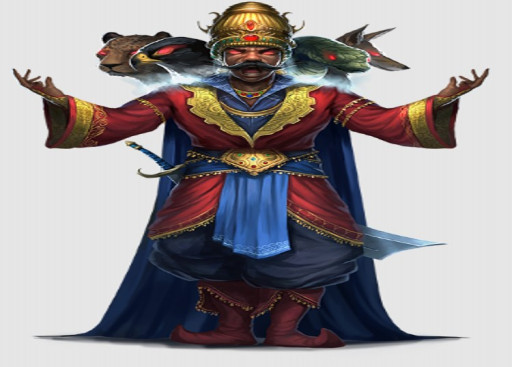
Rakshasas are powerful creatures in their own right. However, once in a generation, a Maharaja is born. These variants are so powerful that even the rakshasas, whose main gimmick is being violent antitheists who worship no one, revere the maharaja.
The maharaja are multiarmed and dangerous. Their Four-Fanged Assault counts as one action and the first three attacks don’t have a penalty. Their falchions are powerful and do a lot of damage. But the real threat is the magic.
The Maharaja has devastating enchantment spells that can take a party member out of the fight outright. The maze spell banishes characters to a pocket dimension. Spells like overwhelming presence, crushing despair, and fabricated truth can make party members outright useless. Once a party member is brought down by these enchantments, they can be attacked mercilessly by the maharaja or any henchman they have.
Maharaja stats:
- Level 20
- Perception +37; darkvision
- Languages Abyssal, Common, Infernal, Undercommon; tongues
- Skills Acrobatics +33, Arcana +33, Deception +41, Diplomacy +38, Intimidation +38, Lore +33 (any three), Occultism +35, Religion +35, Society +35
- Str +8, Dex +9, Con +7, Int +7, Wis +7, Cha +10
- Items +2 greater striking falchion
- AC 45 all-around vision; Fort +31, Ref +33, Will +35; +2 status to all saves vs. magic, +3 status to all saves vs. divine magic
- HP 320; Resistances physical 20 (except piercing); Weaknesses good 20
- Reflect Spell (abjuration, occult) Trigger A foe Casts a Spell the maharaja knows, and the maharaja rakshasa can see its manifestation; Effect The maharaja expends one of their spell slots to reflect the triggering creature's spell. The maharaja loses their spell slot as if they had cast the triggering spell, and then attempts to counteract it (counteract modifier +37, counteract level 10). On a success, the maharaja turns the spell back on its caster. The reflected spell affects only the caster, even if it's an area spell or would normally affect more than one creature. The original caster can attempt a save and use other defenses against the reflected spell as normal.
- Speed 40 feet, fly 30 feet
- Melee falchion +38 [+33/+28] (forceful, sweep), Damage 3d10+16 slashing plus 3d6 mental
- Melee fangs +34 [+30/+26] (agile), Damage 4d6+14 piercing
- Occult Spontaneous Spells DC 47; 10th fabricated truth (1 slot); 9th dispel magic, foresight, overwhelming presence, telepathic demand, weird (4 slots); 8th discern location, dispel magic, maze, mind blank, prismatic wall (4 slots); 7th dispel magic, haste, possession, project image, reverse gravity (4 slots); 6th repulsion, scrying, true seeing, vampiric exsanguination (4 slots); 5th crushing despair, dispel magic, false vision, shadow blast, shadow walk (4 slots); 4th confusion, dimension door, dispel magic, modify memory, read omens (4 slots); 3rd dispel magic, enthrall, haste, hypercognition, nondetection (4 slots); 2nd darkness, dispel magic, misdirection, see invisibility (4 slots); 1st magic missile, sanctuary, true strike, ventriloquism (4 slots); Cantrips (9th) dancing lights, detect magic, ghost sound, mage hand, shield
- Occult Innate Spells DC 47; 10th dominate; 9th clairaudience (at will), clairvoyance (at will), mind reading (at will); Constant (9th) tongues
- Autonomous Spell Frequency once per round; Trigger a foe's turn begins; Effect The maharaja's four heads allow them to quickly cast additional spells. They cast one of their 8th-level or lower occult spontaneous spells that normally takes 2 actions or fewer to cast.
- Change Shape (concentrate, occult, polymorph, transmutation) The maharaja takes on the appearance of any Medium humanoid. This doesn't change their Speed or their attack and damage modifiers with their Strikes but might change the damage type their Strikes deal (typically to bludgeoning). They lose their fangs Strike unless the humanoid form has fangs or a similar unarmed attack, and they lose Four-Fanged Assault unless the new form has four or more heads and fangs.
- Four-Fanged Assault The maharaja makes four fangs Strikes, each against a different target. These Strikes count as only one attack for the maharaja's multiple attack penalty, and the penalty doesn't increase until after they have made all four attacks.
7. Xotanispawn
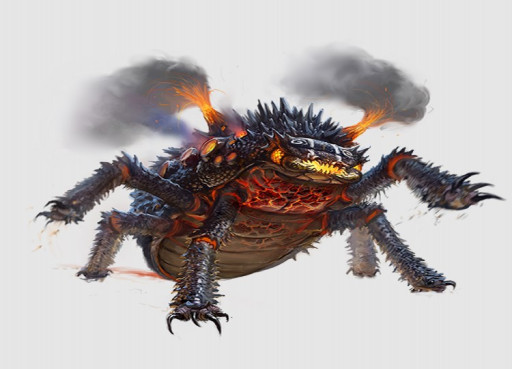
A Xotanispawn is the result of a bug feeding on a dead firebleeder named Xotani, a spawn of the evil god Rovagug. As a result of this feeding, the bug gains extraordinary power. The fiery monster’s infernal power rubs off on the bug, creating the Xotanispawn.
While this monster is an animal and not particularly intelligent, its power often does the fighting for it. Anyone who gets next to it takes damage from the Infernal Furnace attack. Its melee attacks also do a lot of fire damage. Its claws also have a grab ability, pulling the target within range of the Infernal Furnace.
The Xotanispawn’s fire ability also gives it a breath weapon. Much like dragons, it can breathe fire and attack multiple players. When a Xotanispawn dies, it explodes devastating everything nearby. Feasting on a demigod has given this bug extraordinary powers and fighting this giant bug will be a challenge for players.
Xotanispawn stats
- Level 17
- Perception +29; darkvision, tremorsense (imprecise) 60 feet
- Skills Athletics +34, Stealth +31, Survival +29
- Str +9, Dex +6, Con +8, Int -5, Wis +4, Cha +5
- Frightful Presence (aura, emotion, fear, mental) 60 feet, DC 36
- AC 40; Fort +31, Ref +29, Will +23
- HP 340; Immunities chaotic, evil, fire; Weaknesses cold 20
- Explosion (fire) When a Xotanispawn dies, it explodes, dealing 15d8 fire damage to creatures in a 30-foot emanation (DC 39 basic Reflex save).
- Light Blindness
- Internal Furnace (fire) Trigger A creature adjacent to the Xotanispawn touches it or hits it with a physical attack; Effect The triggering creature takes 5d8 persistent fire damage (DC 37 Reflex save to negate).
- Speed 40 feet, burrow 40 feet, climb 40 feet
- Melee jaws +30 [+25/+20] (reach 10 feet), Damage 4d8+9 piercing plus 2d8 persistent fire and Grab
- Melee claw +30 [+26/+22] (agile, reach 10 feet), Damage 4d6+9 slashing plus 2d8 persistent fire
- Breath Weapon (arcane, evocation, fire) The Xotanispawn sprays a 60-foot cone of magma that deals 10d10 fire damage and 2d6 persistent fire damage to all creatures in the area (DC 39 basic Reflex save). The Xotanispawn can’t use its Breath Weapon again for 1d4 rounds.
- Heat Surge When the Xotanispawn critically hits, its body surges with heat, increasing the damage of its Internal Furnace to 10d8 until the start of its next turn.
6. Fire Giant
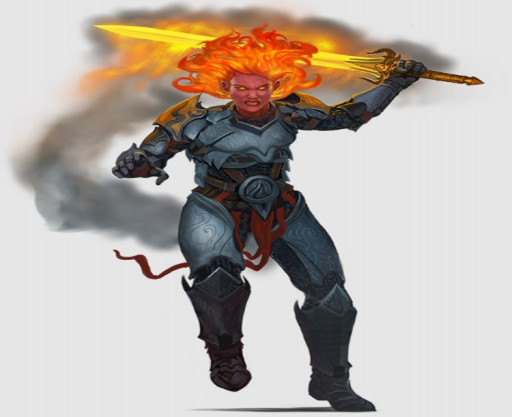
Fire giants are a militaristic race of giants. Unlike the disorganized hill giants that focus more on bullying and crushing anything smaller than they are, fire giants are conquerors. They are more organized, more intelligent, and more dangerous.
The fire giant’s weapons have reach and the fire giant has the attack of opportunity feat. This can make it hard for front-liners to get near the giants. They also have rocks to throw.
Because the giants are sentient and militaristic rather than slavering and attacking anything that moves, a party may fight a group of these. Dodging fiery weapons and rocks will be the least of the party’s issues. The giants can also swing a sword and send out a long range of fire. This potent mix of long and short-ranged attacks, plus the probability of attacking in numbers, makes fire giants formidable bosses.
Fire giant stats:
- Level 10
- Perception +18; low-light vision
- Languages Common, Jotun
- Skills Athletics +25, Crafting +22, Intimidation +23
- Str +7, Dex +0, Con +5, Int +2, Wis +2, Cha +0
- Items +1 striking greatsword, +1 half-plate, sack with 5 rocks
- AC 31; Fort +23, Ref +16, Will +18
- HP 175; Immunities fire; Weaknesses cold 10
- Attack of Opportunity
- Catch Rock
- Speed 25 feet
- Melee greatsword +24 [+19/+14] (magical, reach 10 feet, versatile P), Damage 2d12+13 slashing
- Melee fist +23 [+19/+15] (agile, reach 10 feet), Damage 2d8+13 bludgeoning
- Ranged rock +23 [+18/+13] (brutal, range increment 120 feet), Damage 2d8+13 bludgeoning plus 1d6 fire
- Flaming Stroke (evocation, fire, primal) The fire giant imbues its blade with flames and makes a greatsword Strike with a –2 circumstance penalty against each creature in a 15-foot line. It makes only one attack roll and compares the result to each creature’s AC. This Strike deals an additional 1d6 fire damage and counts as one attack for the fire giant’s multiple attack penalty.
- Throw Rock (fire) A rock thrown by a fire giant deals an additional 1d6 fire damage on a hit.
5. Kraken
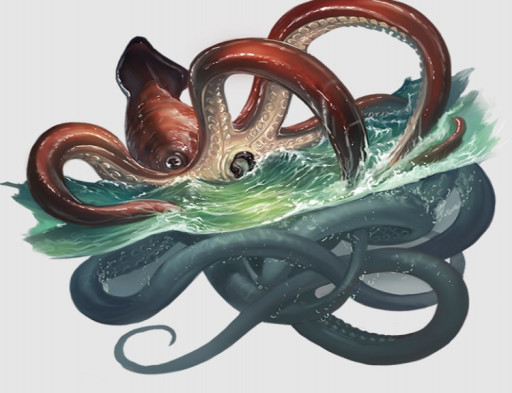
When released upon a party, the Kraken can be a dangerous final boss. These creatures inhabit deep sea locations like sunken cities. They have a lot of treasure from decades of sunken cities so if it’s not the final boss, they can have some interesting treasure.
While not particularly skilled at magic, the Kraken is a physical powerhouse. Its tentacles have a long range and can grab people. If you’re fighting on a boat, that can be an issue since if something with sufficient strength and size can grab you, it can throw you. And fighting in water is rarely easy. The ink it uses is also damaging and poisonous.
A Kraken’s real interesting power is controlling the weather. It can make hurricanes and other dangerous phenomena. This impairs the party’s ability to move, see or fight. And its size can allow it to attack a boat directly The Kraken makes for a dangerous foe in the seas.
Kraken stats:
- Level 18
- Perception +34; darkvision
- Languages Aquan, Common
- Skills Athletics +38, Intimidation +32, Nature +35, Stealth +33
- Str +9, Dex +4, Con +9, Int +5, Wis +6, Cha +5
- AC 42; Fort +35, Ref +28, Will +32
- HP 360; Immunities controlled, emotion; Resistances cold 10, poison 20
- Altered Weather (aura, evocation, primal) A kraken reshapes the weather within 2 miles of it, with the effect of the control weather ritual centered on the kraken and based on its emotional state, at the GM’s discretion. If the kraken dies, the weather returns to normal immediately.
- Speed 10 feet, swim 40 feet
- Melee arm +37 [+32/+27] (reach 40 feet, magical), Damage 4d10+17 bludgeoning plus Grab
- Melee tentacle +37 [+33/+29] (reach 60 feet, agile, magical), Damage 3d10+17 bludgeoning plus Grab
- Melee beak +37 [+32/+27] (reach 20 feet, magical), Damage 3d10+17 piercing
- Primal Innate Spells DC 40; 10th dominate (animals only); 8th punishing winds; 7th resist energy
- Constrict 2d10+17 bludgeoning, DC 40. On a failed save, a creature that is holding its breath loses 1d4 rounds worth of air.
- Double Attack The kraken makes two Strikes with two different arms or tentacles, each limb targeting a different creature. Double Attack counts as two attacks toward the kraken’s multiple attack penalty for further actions, but the penalty doesn’t increase until after both attacks are made. If the kraken subsequently uses the Grab action, it Grabs any number of creatures it hit with Double Attack.
- Ink Cloud The kraken emits a cloud of black, venomous ink in an 80-foot emanation. This cloud has no effect outside water. Creatures inside the ink cloud are exposed to kraken ink poison and are undetected while inside the cloud. The kraken can’t use Ink Cloud again for 2d6 rounds, and the cloud dissipates after 1 minute.
- Jet (move) The kraken moves through the water up to 280 feet in a straight line without triggering reactions.
- Kraken Ink (poison) Krakens are immune to this poison. Saving Throw DC 39 Fortitude; Maximum Duration 10 rounds; Stage 1 3d6 poison damage and sickened 1 (1 round); Stage 2 4d6 poison damage and sickened 2 (1 round).
4. Horde Lich
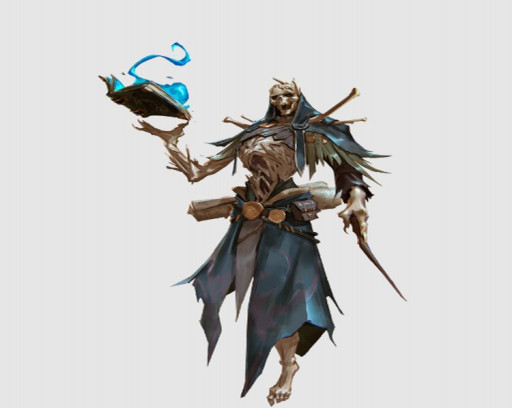
Among the most intelligent of the undead, a lich can often be the one pulling the strings behind the plot. Deceitful and cunning, they can persuade or create followers that can enact the lich’s will. Liches come in different forms. A horde lich can be its strongest.
Being a more powerful undead wizard, the horde lich has a longer list of spells with higher DCs to avoid them. These include power word stun and disintegrate. Even the can trips can be devastating. At a high level, the electric arc spell can do a lot of damage.
The horde lich exchanges the lich’s paralyzing touch ability for the ability to unleash extensions of its consciousness, called servitors. These servitors have access to all the spells the main body does. However, the lich and the servitors share the same hit points. That said, the horde lich will have lesser undead on the field to act as meatshields too.
Horde lich stats:
- Level 15
- Perception +25; darkvision
- Languages Abyssal, Aklo, Common, Draconic, Dwarven, Infernal, Jotun, Necril, Undercommon
- Skills Acrobatics +27, Arcana +31, Crafting +29 (can craft magic items), Deception +27, Intimidation +27, Religion +25, Stealth +27, Thievery +27
- Str +2, Dex +6, Con +0, Int +8, Wis +4, Cha +6
- Items wand of dispel magic (6th), scroll of teleport
- AC 35; Fort +21, Ref +27, Will +27; +1 status to all saves vs. positive
- HP 250 (negative healing, rejuvenation); Immunities death effects, disease, paralyzed, poison, unconscious; Resistances cold 10, physical 10 (except magical bludgeoning)
- Rejuvenation (arcane, necromancy) When a lich is destroyed, their soul immediately transfers to their soul cage. A lich can be permanently destroyed only if their soul cage is found and destroyed.
- Shatter Block Trigger A creature scores a critical hit on the horde lich; Requirements The horde lich has at least one servitor attached (see Servitor Assembly); Effect The critical hit is a normal hit instead. One of the horde lich's servitors detaches from them and is placed in an open, adjacent space, prone. The servitor takes the damage from the triggering attack.
- Speed 25 feet
- Melee hand +27 [+22/+17] (finesse, magical), Damage 5d8 negative
- Arcane Prepared Spells DC 39, attack +31; 8th horrid wilting, power word stun, uncontrollable dance; 7th power word blind, project image, spell turning, true target; 6th disintegrate, feeblemind, repulsion, true seeing; 5th command, cone of cold, crushing despair, hallucination; 4th confusion, fly, freedom of movement, veil; 3rd haste, paralyze, slow, stinking cloud; 2nd hideous laughter, invisibility, mirror image (×2); 1st alarm, command, illusory disguise, unseen servant; Cantrips (8th) daze, detect magic, electric arc, mage hand, shield
- Servitor Assembly (manipulate) A horde lich has three servitor bodies folded up and attached to themself, usually in the ribcage, on the arms, and around the legs. The lich detaches one of these servitors and places it in any open, adjacent space. The lich can alternatively take this action to reattach an adjacent servitor.
- The lich and their servitors share actions and Hit Points, and the servitors use the same statistics as the lich. Spells and effects that target the lich or their servitors affect all of them equally, but they're still treated as just one creature when targeted by spells and attacks. The horde lich attempts only one save against such effects, but they take a –2 circumstance penalty to defend against effects that target both the lich and one or more detached servitors. Whenever the horde lich Casts a Spell, they can choose to have the spell originate from themself or from any one of their detached servitors. If the horde lich is destroyed, all attached servitors are destroyed as well. If a servitor is dealt a critical hit, it's destroyed (and the horde lich takes the damage as normal).
- Servitor Attack (concentrate) Each of the horde lich's detached servitors Strike, with a –2 circumstance penalty on the attack roll. Each of these Strikes counts toward the lich's multiple attack penalty, but the penalty doesn't increase until after all the attacks.
- Servitor Lunge Requirements The horde lich's last action was a critical hit with a melee Strike, and the horde lich has at least one servitor attached; Effect One of the lich's attached servitors detaches adjacent to the target, and the target is grabbed by that servitor.
- Servitor Realignment (concentrate) Each of the horde lich's detached servitors can either Interact or take a basic action with the move trait. The lich chooses which action each of them takes.
- Steady Spellcasting If a reaction would disrupt the horde lich's spellcasting action, the lich attempts a DC 15 flat check. On a success, the action isn't disrupted.
3. Rune Giant

The strongest giants in Pathfinder are the rune giants. Carved by ancient wizards ages ago, these giants wield magic as easily as they wield a weapon. The rune giant blends his magic with his physical abilities to become a threat that can trample anything that annoys him.
The rune giant wields the traditional martial weapon with an absurdly long reach that giants have. However, his access to rune magic allows him to enhance the weapons’ abilities. They can either do additional fire damage, add additional dice, or send enemies flying backward. When a giant activates these runes, they also unleash a magical attack on anything in front of them.
Rune giants have various enchantment spells like charm and dominate. These spells get a bonus if they’re being used on anything with the giant subtype. However, this may not be necessary as some lesser giants may be in the rune giant’s employ because they revere the rune giant.
Rune Giant stats:
- Level 16
- Perception +28; low-light vision
- Languages Common, Jotun, Terran
- Skills Arcana +28, Athletics +32, Crafting +28, Intimidation +28, Society +27
- Str +9, Dex +2, Con +7, Int +2, Wis +6, Cha +4
- Items +1 striking longspear, +2 greater striking greatsword, +1 splint mail
- AC 38; Fort +33, Ref +26, Will +28
- HP 330; Immunities fire
- Attack of Opportunity The rune giant gains an additional reaction at the beginning of each of its turns that it can only use for an Attack of Opportunity.
- Catch Rock
- Speed 45 feet; air walk
- Melee greatsword +33 [+28/+23] (magical, reach 20 feet, versatile P), Damage 3d12+17 slashing
- Melee longspear +32 [+27/+22] (magical, reach 25 feet), Damage 2d8+17 piercing
- Melee fist +31 [+27/+23] (agile, reach 20 feet), Damage 3d8+17 bludgeoning
- Ranged rock +31 [+26/+21] (brutal, range increment 120 feet), Damage 2d12+17 bludgeoning
- Arcane Innate Spells DC 35; 8th charm, suggestion; 6th dominate (x3), true seeing; 5th sending; 4th charm (at will), suggestion (at will); Constant (4th) air walk
- Command Giants When a rune giant casts a mental spell against another giant, the DC is 39, rather than 35.
- Demand (arcane, enchantment, mental) When a rune giant casts its innate sending spell, it can also cast suggestion on the target.
- Flashing Runes (arcane, evocation, light) Trigger The rune giant uses an arcane ability or casts an arcane spell. Effect The runes on the giant’s body flash as they produce magical energy. Each creature within a 10-foot emanation must attempt a DC 35 Fortitude save.
- Critical Success The creature is unaffected.
- Success The creature is dazzled for 1 round.
- Failure The creature is blinded for 1 round.
- Invoke Rune (arcane, concentrate, electricity, evocation) The rune giant invokes one of the runes on its body, causing the rune to spray forth a 30-foot cone of sparks that deals 6d12 electricity damage to all creatures in the cone (DC 37 basic Reflex save).
- A glowing copy of the invoked rune appears on a single weapon the giant holds, granting the weapon one effect listed below of the giant’s choice. The giant can’t use Invoke Rune again for 1d4 rounds. The effect on the weapon lasts for 1 minute. If the giant places a new rune on a weapon, any previously placed rune immediately vanishes, ending its effect.
- Rune of Destruction The weapon gains the deadly trait with three weapon damage dice of the same die size as for the base weapon, and a creature hit with the weapon is drained 1 unless it succeeds at a DC 35 Fortitude save.
- Rune of Flames The weapon deals an additional 3d6 fire damage on all attacks.
- Rune of Smiting When the weapon hits, the giant can Push the target back 10 feet, or 20 feet on a critical hit.
- Throw Rock
- Wide SwingThe rune giant makes a single greatsword Strike and compares the attack roll result to the ACs of up to two foes within its reach. This counts as two attacks for the giant’s multiple attack penalty.
2. Adamantine Golem
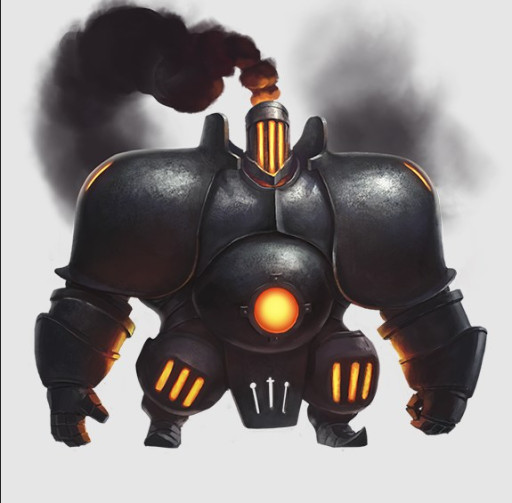
While a lot of Pathfinders fight these bosses to save the world or some other noble cause, some Pathfinder parties are more self-interested. They want the ultimate treasure. And you can’t get more ultimate than the adamantine golem.
This golem has enough adamantine to buy and sell multiple nations in the Pathfinder world. However, it doesn’t go down without a fight. Its furnace can be opened to unleash a cone of steam to attack everyone in front of it. Its fists can shatter armor on a critical hit.
Its real strength is its defense. Being made of adamantine, it has a strong defense against most normal weapons. It resists a lot of magic. And it can repair itself if it gets brought to 0 HP. However, a high-level cast of dispel magic can bring it down. If a party does bring this machine down, they will get an excellent prize. Its furnace can be turned into a forge for ultimate weapons. A perfect stop on the way to a final boss.
Adamantine Golem stats:
- Level 18
- Perception +26; darkvision
- Skills Athletics +38
- Str +9, Dex -1, Con +9, Int -5, Wis +0, Cha -5
- AC 42; Fort +33, Ref +27, Will +29
- HP 255 (repair mode); Immunities bleed, death effects, disease, doomed, drained, fatigued, fire, healing, magic (see below), mental, necromancy, nonlethal attacks, paralyzed, poison, sickened, unconscious; Resistances physical 20 (except vorpal adamantine)
- Golem Antimagic harmed by acid (9d10, 2d10 from areas or persistent damage); healed by fire (area 2d10 HP); slowed by electricity
- Repair Mode When the adamantine golem is at 0 HP, it isn’t destroyed. Instead, it enters repair mode, during which it is slowed 1, can’t take reactions, and can take only the Self-Repair action. Once it has more than 30 HP, it can use any type of action and can use reactions, though it remains slowed 1 and can’t take any reactions until the start of its next turn. If a critical hit with an adamantine vorpal weapon reduces the golem to 0 HP, or if such a weapon hits it while it’s already at 0 HP, then the golem is destroyed.
- Vulnerable to Dispelling The golem can be targeted by disjunction and dispel magic. If targeted by such a spell of 9th level or higher, the golem has its resistance to physical damage lowered to 15 and is slowed 1 (or slowed 2 if in repair mode) for 1d4 rounds. During this time, if the golem is reduced to 0 HP while already in repair mode, it is destroyed.
- Speed 30 feet
- Melee fist +35 [+30/+25] (deadly 3d12, magical, reach 15 feet), Damage 3d10+17 bludgeoning plus destructive strike
- Destructive Strike On a critical hit, the adamantine golem’s fist Strike breaks the target’s armor, if any, in addition to dealing damage to the target. If the target has a shield raised, the golem breaks the shield instead.
- Inexorable March The adamantine golem Strides up to its Speed, pushing back each creature whose space it moves into and damaging them if they try to stop its movement. A creature can try to bar the way by attempting a DC 45 Fortitude save.
- Critical Success The creature takes no damage and its armor takes no damage.
- Success The golem halts its movement and cannot enter the creature’s square.
- Failure The resisting creature is damaged and its armor takes damage as if hit by the adamantine golem’s fist.
- Self-Repair (manipulate) The golem repairs itself, regaining 30 Hit Points.
- Vent (fire) The golem vents a 30-foot cone of superheated steam from its internal forge. This deals 15d6 fire damage to all creatures in the cone (DC 40 basic Reflex). The golem can't use Vent again for 1d6 rounds.
1, Ancient Umbral Dragon
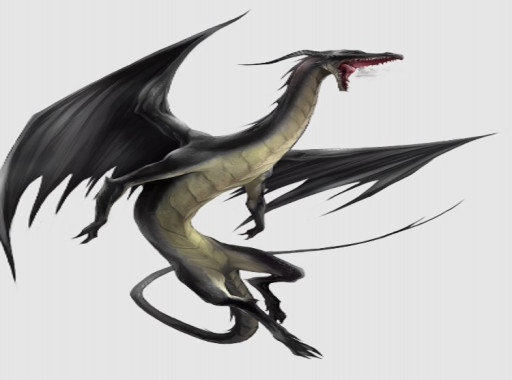
It would be sacrilege if I didn’t put a dragon as the number 1 spot on this list. After all, that’s what everyone wants to fight when they make a character for the first time. The ancient umbral dragons are among the most powerful. Unlike many dragons who let their pride blind them, this dragon takes threats seriously and doesn’t play fair.
In all likelihood, it will open the battle with darkness and it can cast that spell at will. While some characters may have a way to overcome it, it may require some mid-battle setup During which the dragon, or its minions, may attack you. It’s pragmatic and has the ritual spell to summon shadows. If it knows you’re coming, there will be high-level undead in the room. Its breath attacks can either be negative energy or shadow energy. Like all dragon breath, it hurts.
Another thing that will make this fight brutal is the spells. It can drain life energy from anything within 30 feet of it. The massacre and finger of death spells can do a lot of damage and kill anyone that has their HP drop to zero. Combine those with its breath and other body parts, and you’ll have a tense and fast-paced fight.
Ancient Umbral Dragon Stats:
- Level 20
- Perception +36; greater darkvision, scent (imprecise) 60 feet, tremorsense (imprecise) 60 feet
- Languages Common, Daemonic, Draconic, Necril, Shadowtongue
- Skills Acrobatics +33, Athletics +38, Deception +34, Intimidation +36, Nature +34, Stealth +35, Survival +34
- Str +10, Dex +5, Con +7, Int +6, Wis +8, Cha +6
- AC 45; Fort +35, Ref +33, Will +38; +1 status to all saves vs. magic
- HP 375; Immunities negative, paralyzed, sleep
- Frightful Presence (aura, emotion, fear, mental) 90 feet, DC 40
- Attack of Opportunity Jaws only.
- Speed 60 feet, fly 200 feet
- Melee jaws +38 [+33/+28] (negative, magical, reach 20 feet), Damage 4d10+18 piercing plus 4d6 negative and drain vigor
- Melee claw +38 [+34/+30] (agile, magical, reach 15 feet), Damage 4d10+18 slashing
- Melee tail +36 [+31/+26] (magical, reach 25 feet), Damage 4d12+18 slashing
- Melee wing +36 [+32/+28] (agile, magical, reach 20 feet), Damage 3d10+18 slashing
- Primal Innate Spells DC 42; 10th massacre; 9th darkness (at will), finger of death; 8th vampiric exsanguination (at will); Cantrips (10th) detect magic
- Rituals DC 42; 2nd create undead (shadows only)
- Breath Weapon The umbral dragon breathes in one of two ways. They can't use Breath Weapon again for 1d4 rounds.
- Negative (necromancy, negative, primal) The dragon breathes a blast of darkness in a 50-foot cone that deals 21d6 negative damage (DC 42 basic Reflex save). Undead creatures take 25d6 force damage instead of the negative damage.
- Shadows (necromancy, primal, shadow) The dragon breathes a blast of shadows in a 50-foot cone. Each creature within the cone must attempt a DC 42 Fortitude save.
- Critical Success The creature is unaffected.
- Success The creature is enfeebled 3 for 1 round.
- Failure The creature is enfeebled 3 for 1 minute.
- Critical Failure The creature is enfeebled 3 for 1 minute and blinded for 1 round.
- Draconic Frenzy The dragon makes two claw Strikes and one wing Strike in any order.
- Draconic Momentum The dragon recharges their Breath Weapon whenever they score a critical hit with a Strike.
- Drain Vigor (primal, necromancy) When the dragon deals negative damage to a living creature with its jaws Strike, the umbral dragon gains 20 temporary Hit Points and the creature must succeed at a DC 41 Fortitude save or become enfeebled 2. Further damage dealt by the dragon's jaws Strike increases the enfeebled condition value by 2 on a failed save, to a maximum of enfeebled 4.
- Ghost Bane An umbral dragon's Strikes affect incorporeal creatures with the effects of a ghost touch property rune, and an umbral dragon's jaws deal an additional 8d6 force damage to undead.

